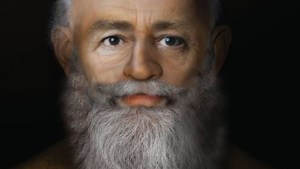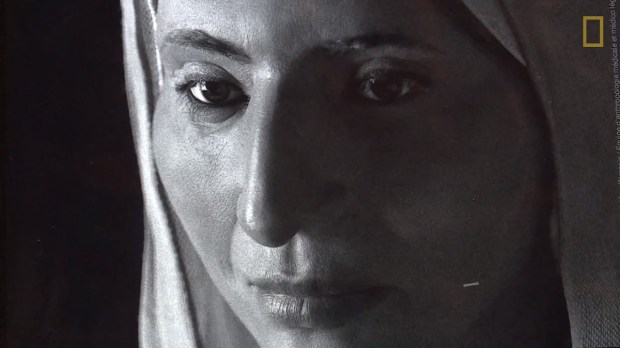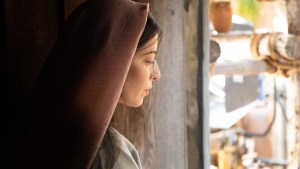The joint effort of an artist and a scientist have yielded images of a face that might have belonged to Mary Magdalene. The 3D facial reconstruction was performed on a skull that many believe is the true skull of the early saint, housed in the Basilica of Mary Magdalene in Saint-Maximin-La-Sainte-Baume, France.
The resting place of the relics is tied to one of the traditional tales of what happened to Mary Magdalene after Jesus’ Resurrection. In a medieval French account, she traveled to the south of France by boat to preach the Gospel of Jesus. There, according to legend, she ended her days as a hermit in a cave, sustained only by Holy Communion brought to her by angels. Later pilgrims built a church over her resting place.
Philippe Charlier, a biological anthropologist from the University of Versailles, and Philippe Froesch, a visual forensic artist, were able to create a digital model of the skull based on 500 photos of the relic. They said the skull was in such good condition that they had no trouble determining the position of the nose, eyes, and mouth.
Sarah Gibbens from National Geographic reports that from their examination, they found that the skull belonged to a woman around the age of 50, of Mediterranean descent. They were able to fill in the facial features based on these indicators, as well as the natural contours of the skull.
The color of her hair was based hair strands that still remain with the relic, and the skin color was chosen from a list of tones most common to the Mediterranean region. Weight and facial expression, however, were left up to Charlier and Froesch’s discretion.
To those who believe that the skull is genuine, the image produced by the two researchers offers valuable insight into the biblical narratives. However, Charlier notes that the skull may not be the Magdalene’s. He told Nat Geo:
“We are absolutely not sure that this is the true skull of Mary Magdalene,” Charlier said, adding, “But it was very important to get it out of anonymity.”
The history of the remains housed in the Saint-Maximin-La-Sainte-Baume Basilica can be traced back to the 13th century, when rumors of the relic’s authenticity were in circulation. However, it should be noted that there are at least five other sets of remains that are purported to belong to Mary Magdalene.
Charlier expressed a desire to work with the skull outside of its reliquary, so that he might carbon date the remains and run a DNA analysis on them; however, such testing involves the removal of pieces of the relic and has historically been opposed by the Catholic Church.
Regardless of whether the Church decides to allow them greater access to the skull, the pair has stated that they would like to continue their reconstructive work on the rest of the remains, in order to give a full-body representation of what Mary Magdalene may have looked like.



